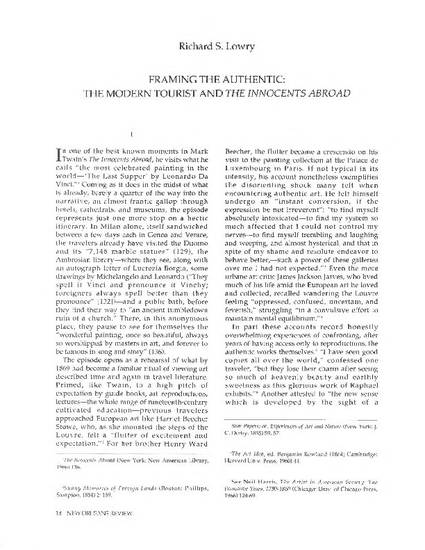
In one of the best known moments in Mark Twain's The Innocents Abroad, he visits what he calls " the most celebrated painting in the world- 'The Last Supper' by Leonardo Da Vinci."' Coming as it does in the midst of what is already, barely a quarter of the way into the narrative, an almost frantic gallop through hotels, cathedrals, and museums, the episode represents just one more s top on a hectic itinerary. In Milan a lone, itself sandwiched between a few days each in Genoa and Venice, the travelers already have visited the Duomo and its "7,148 marble statues" (129), the Ambrosian library- where they see, along with an autograph letter of Lucrezia Borgia, some drawings by Michelangelo and Leonardo ("They spell it Vinci and pronounce it Vinchy; foreigners always spell better than they pronounce" [1321)- and a public bath, before they find their way to "an ancient tumbledown ruin of a church." There, in this anonymous place, they pause to see for themselves the "wonderful painting, once so beautiful, always so worshipped by masters in art, and forever to be famous in song and story" (136).
Available at: http://works.bepress.com/richard-lowry/14/
